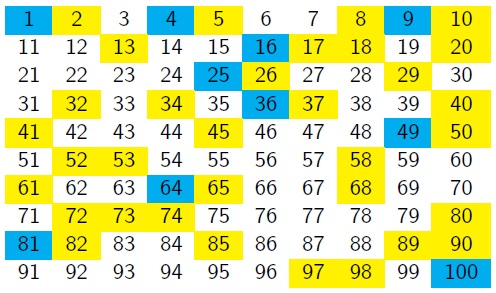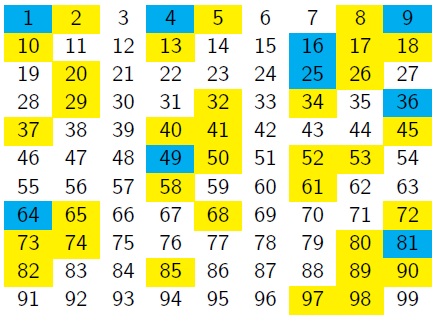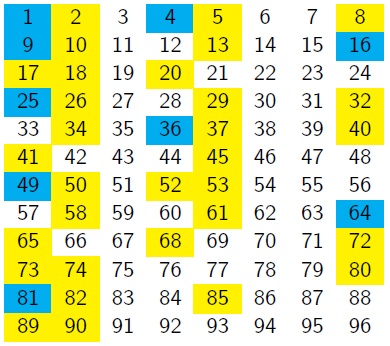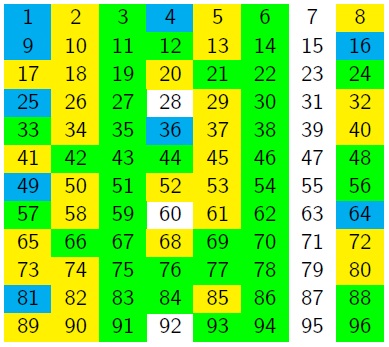Or search by topic
Number and algebra
Geometry and measure
Probability and statistics
Working mathematically
Advanced mathematics
For younger learners
Filling the Gaps



Filling the Gaps printable sheet
Charlie has been thinking about which numbers can be written as a sum of two square numbers. He took a $10\times10$ grid, and shaded the square numbers in blue and the sums of two squares in yellow.

He hoped to find a pattern, but couldn't see anything obvious.
Vicky suggested changing the number of columns in the grid, so they reduced it by one:


What do you notice about the positions of the square numbers?
What do you notice about the positions of the sums of two square numbers?
Can you make any conjectures about the columns in which squares, and sums of two squares, would appear if the grid continued beyond 96?
Can you prove any of your conjectures?
You might like to look back at the nine-column grid and ask yourself the same questions.
Charlie couldn't write every number as a sum of two squares. He wondered what would happen if he allowed himself three squares.

You may also like
Novemberish
a) A four digit number (in base 10) aabb is a perfect square. Discuss ways of systematically finding this number. (b) Prove that 11^{10}-1 is divisible by 100.

